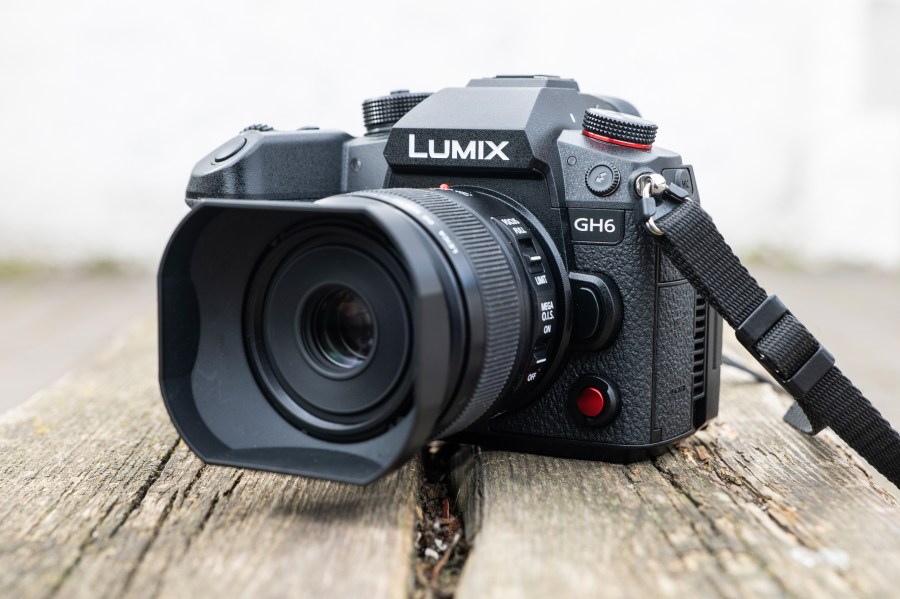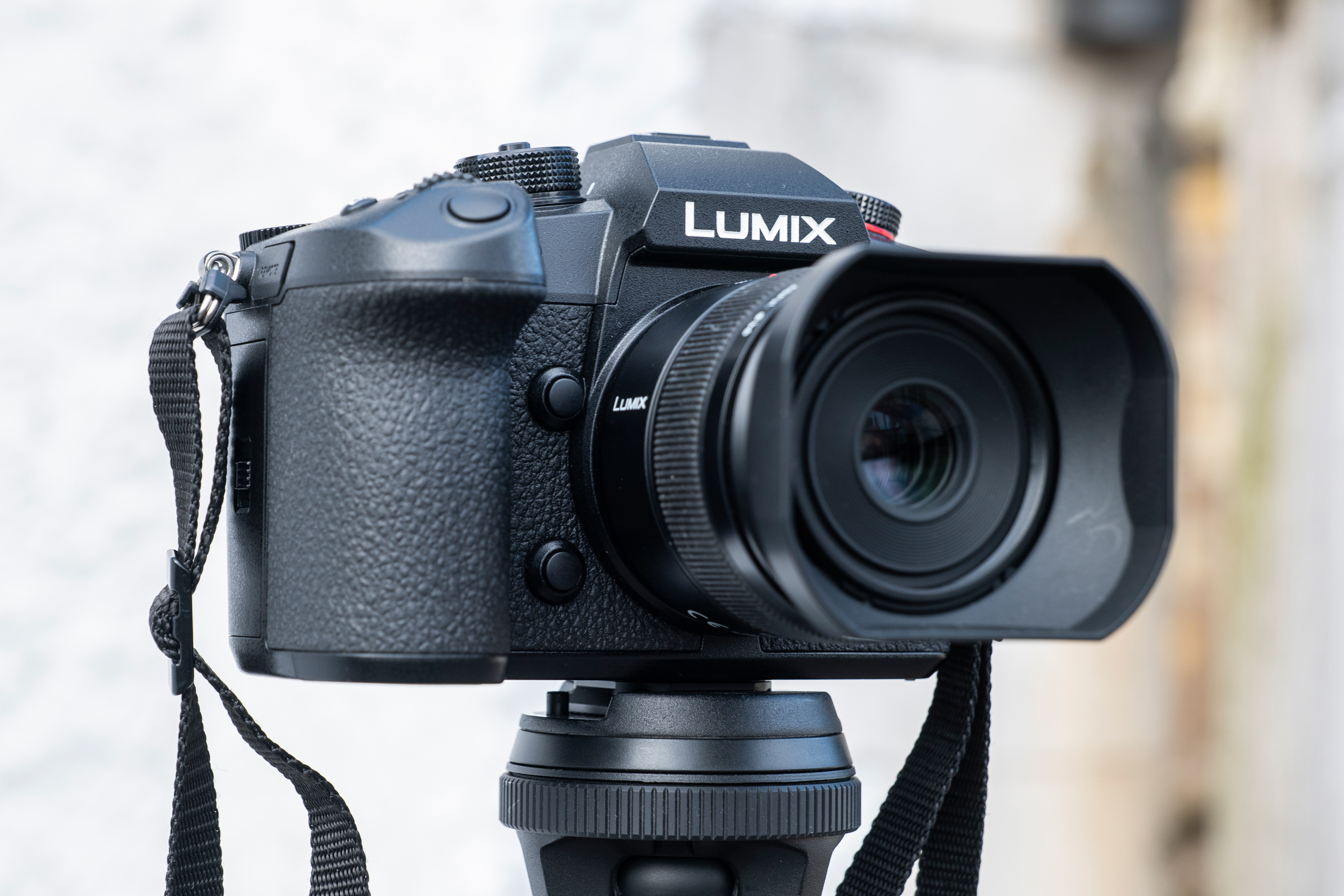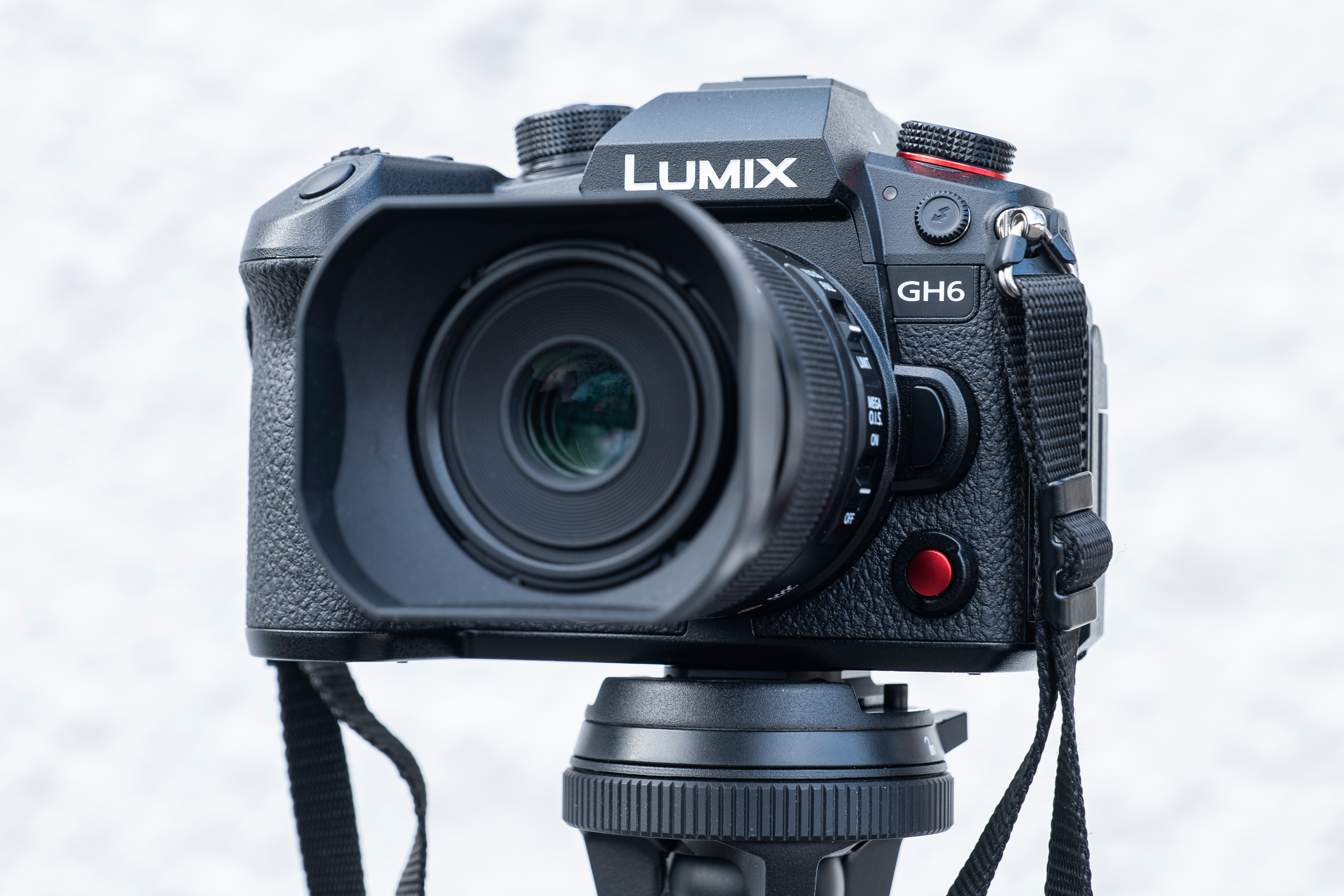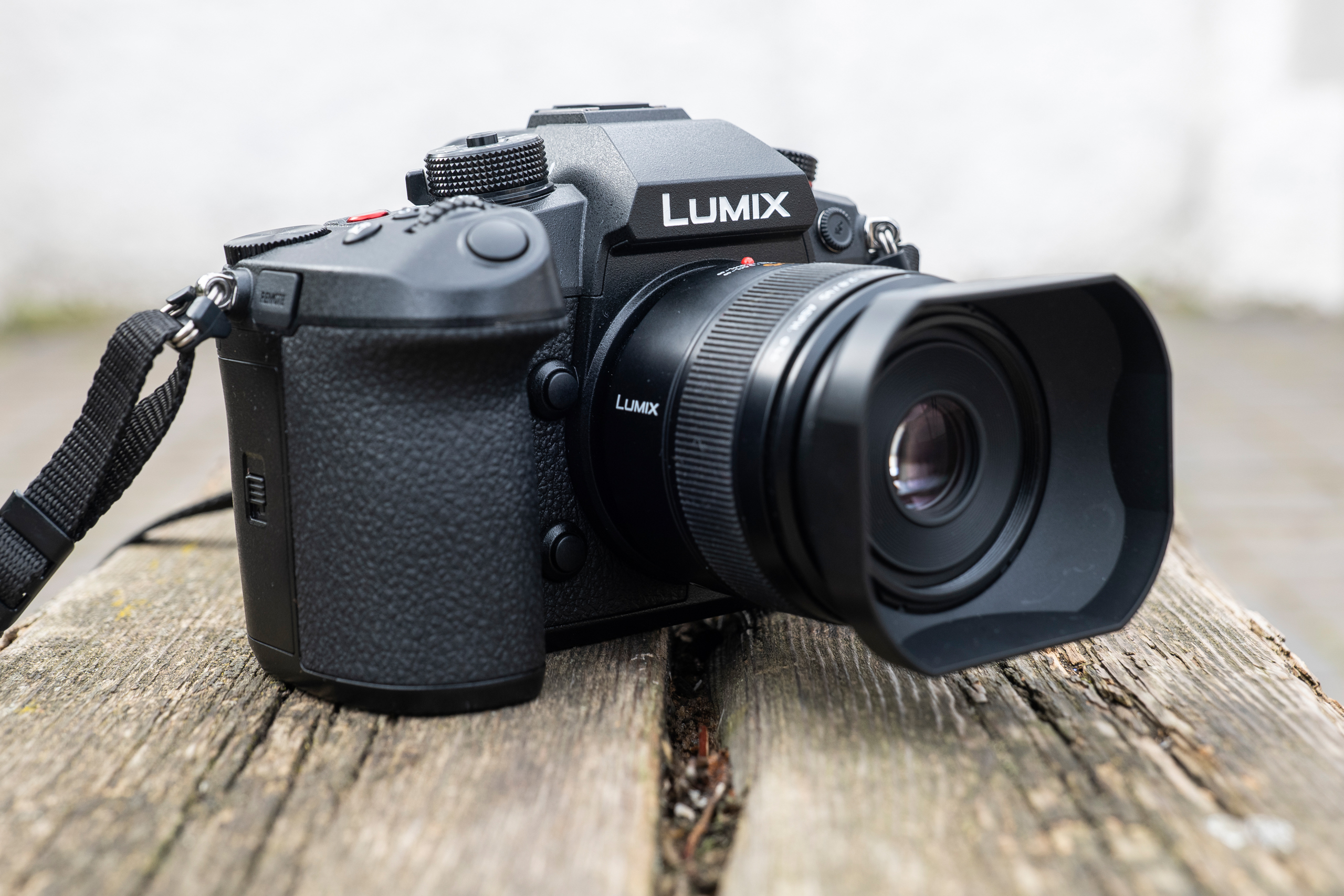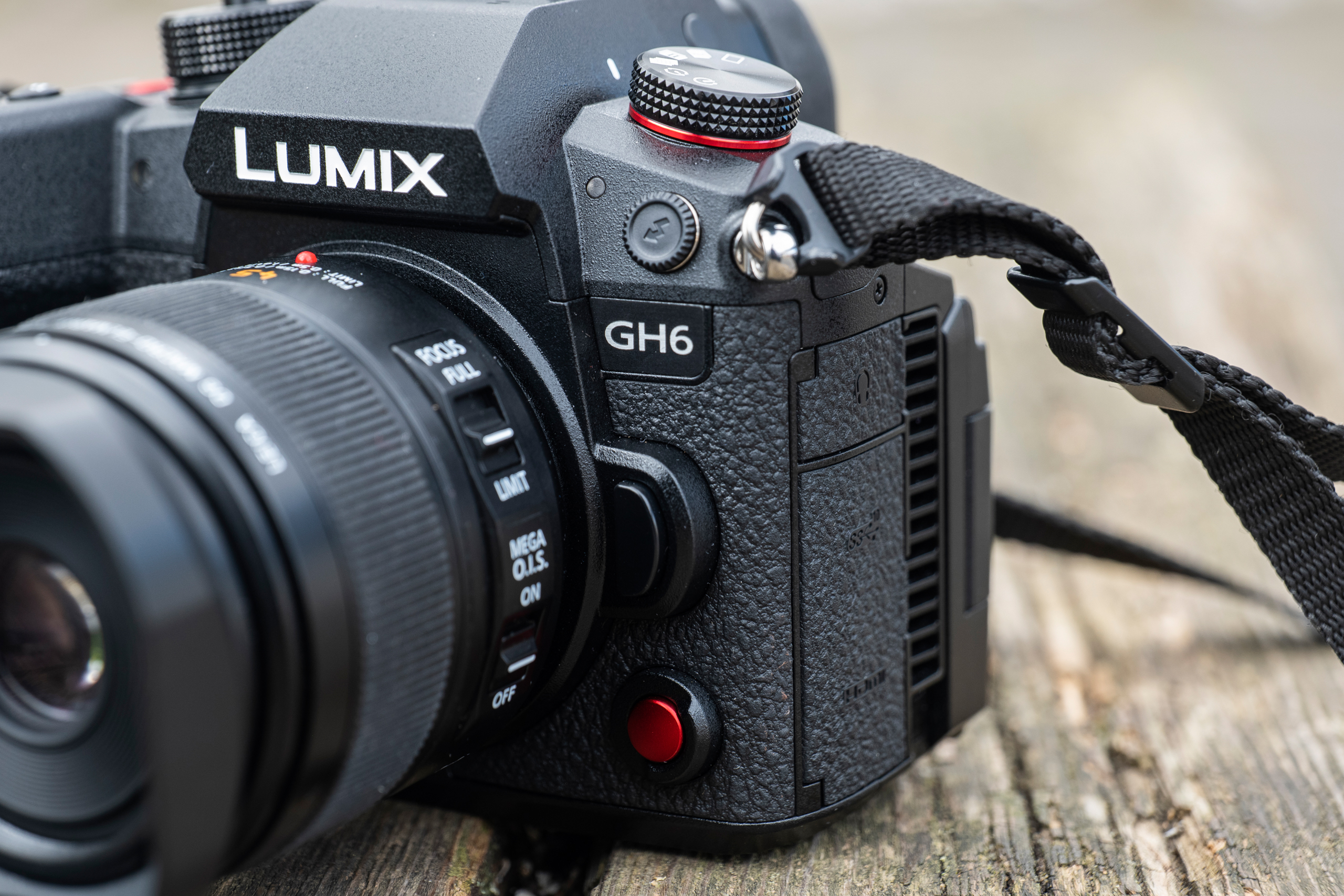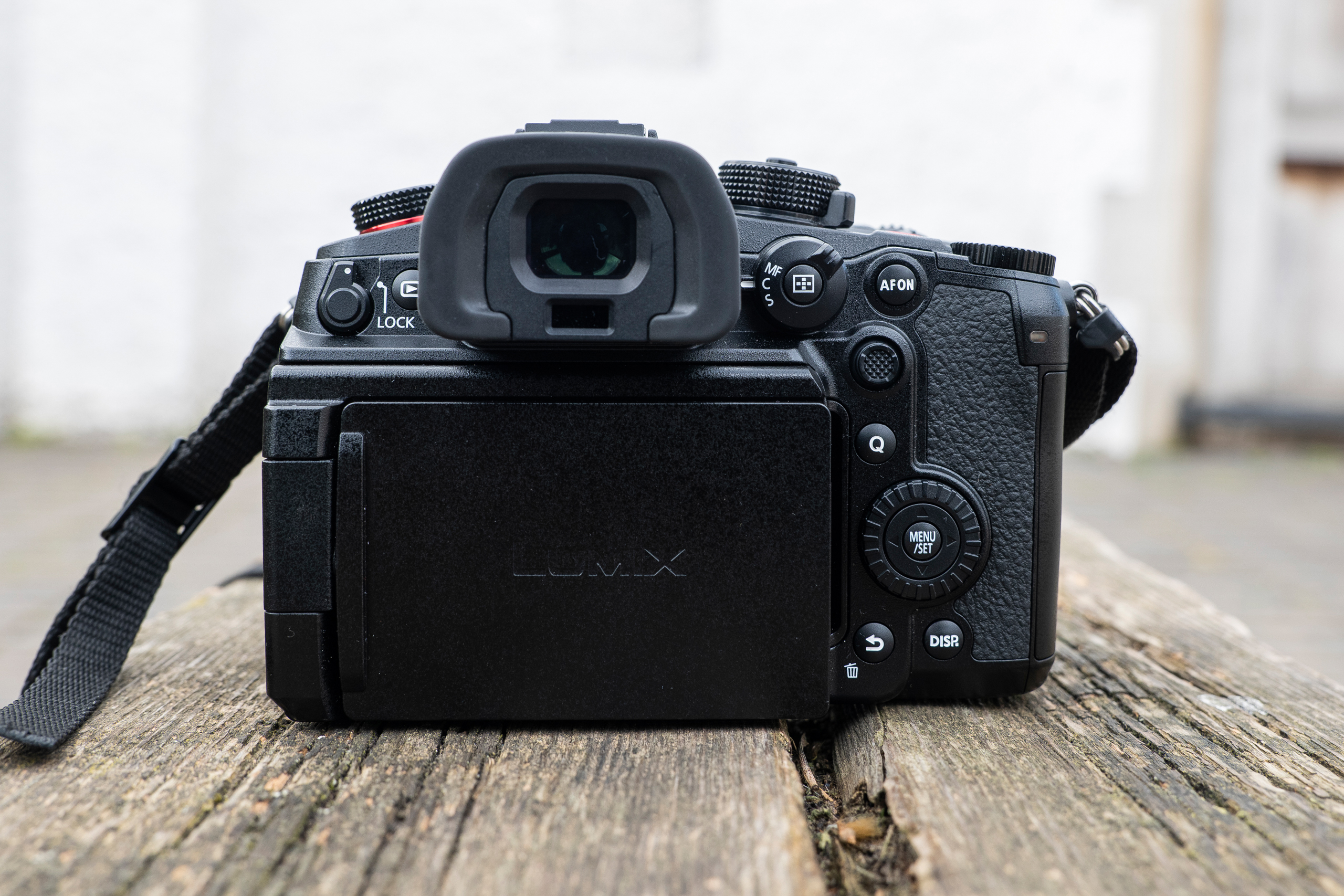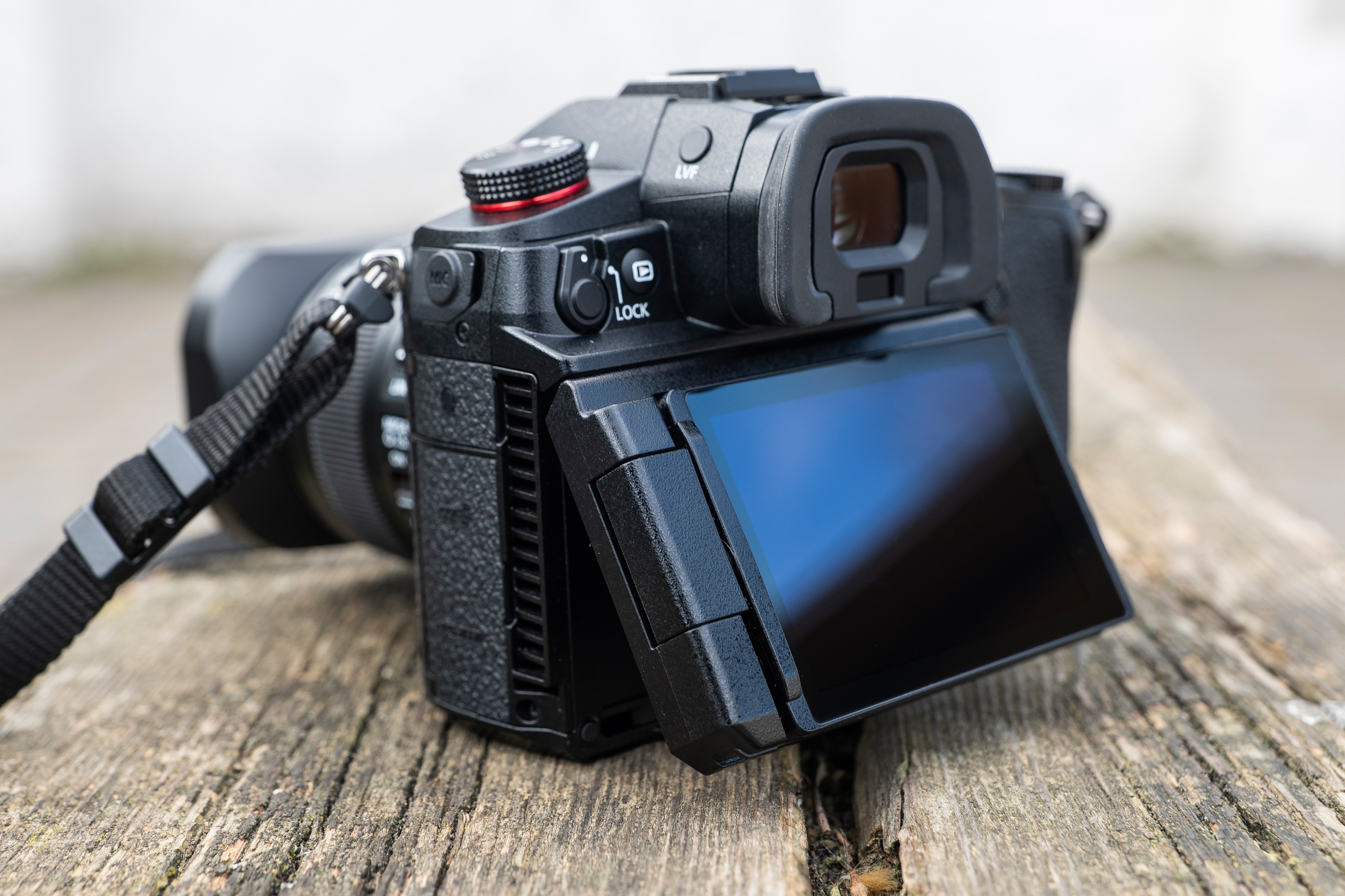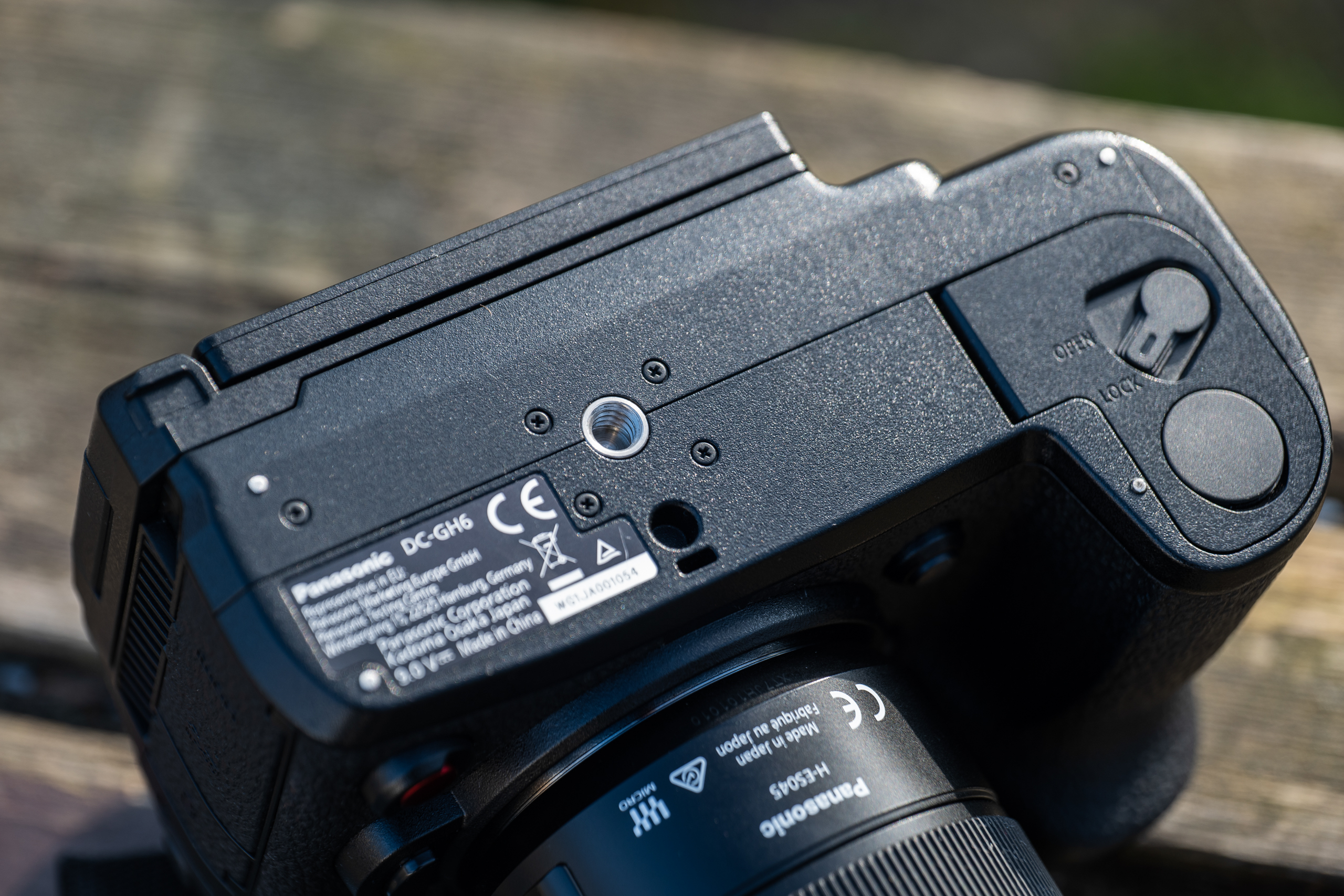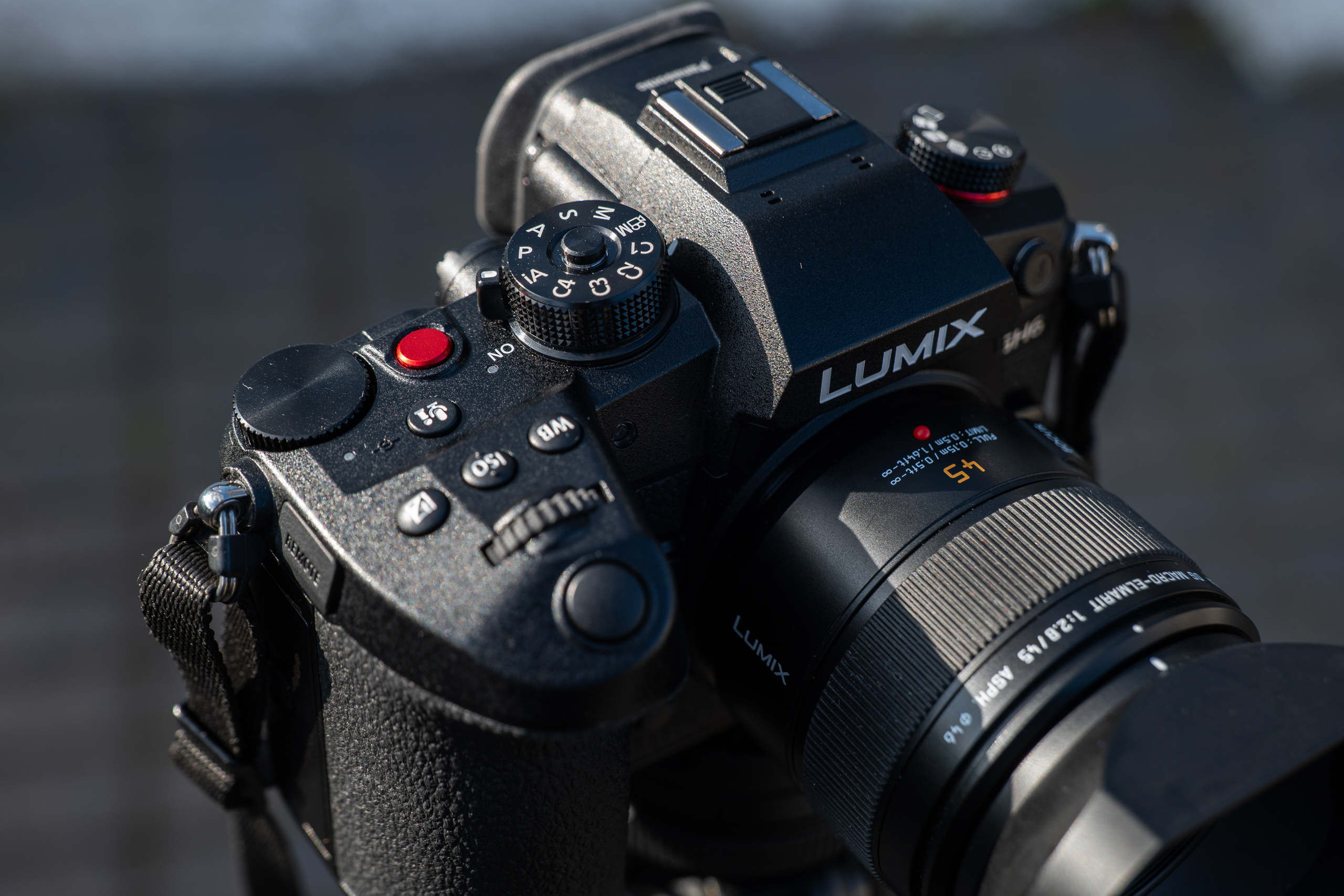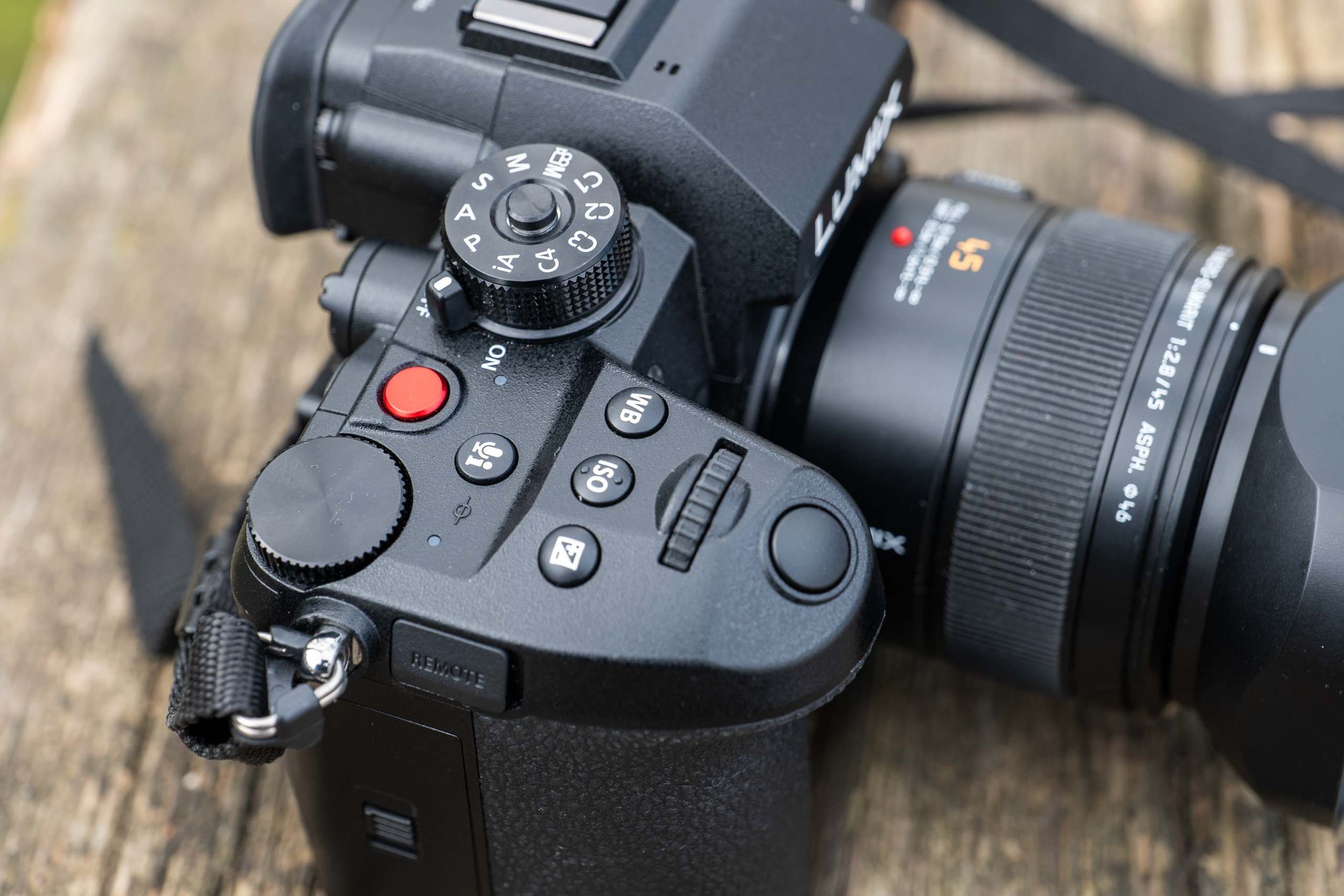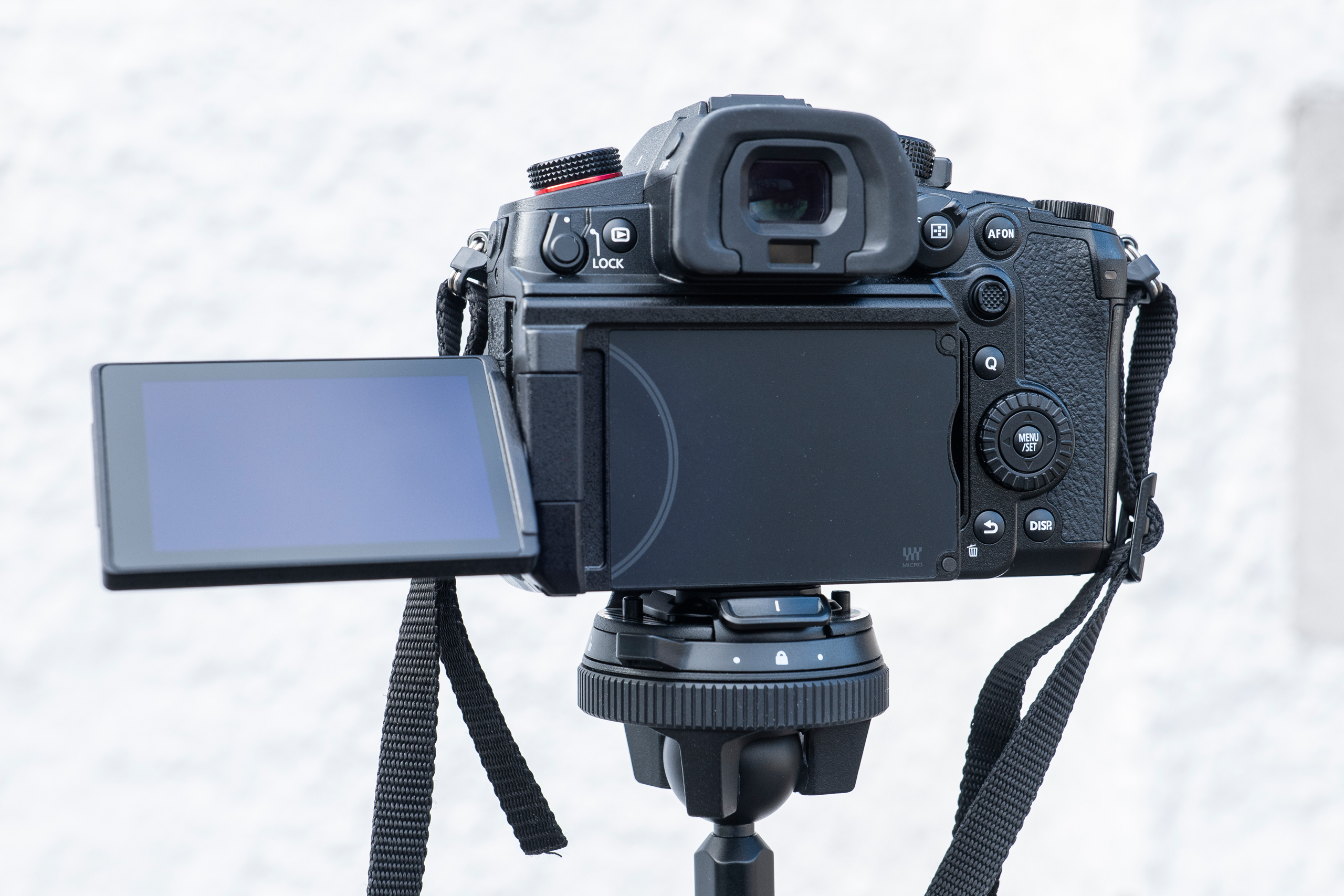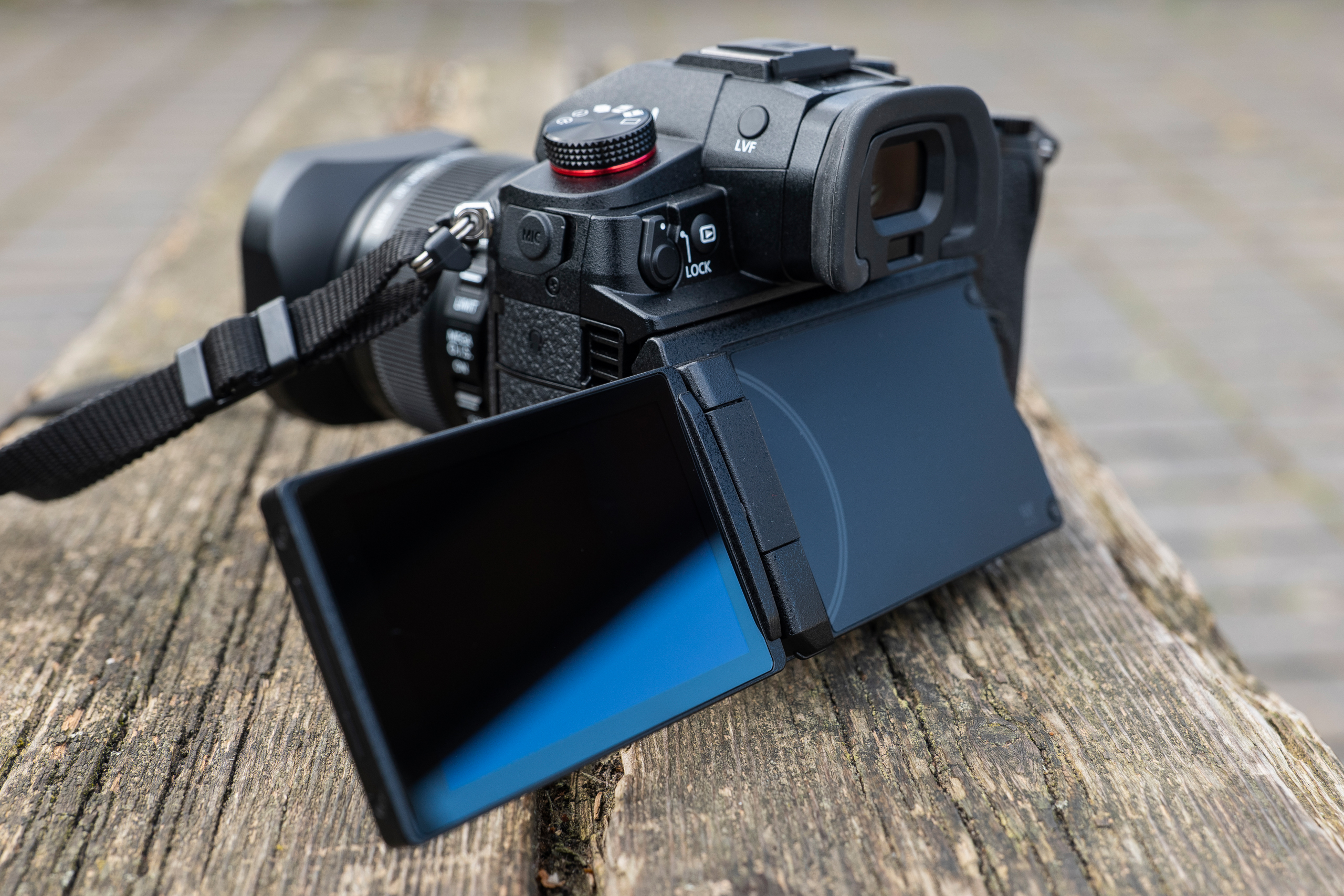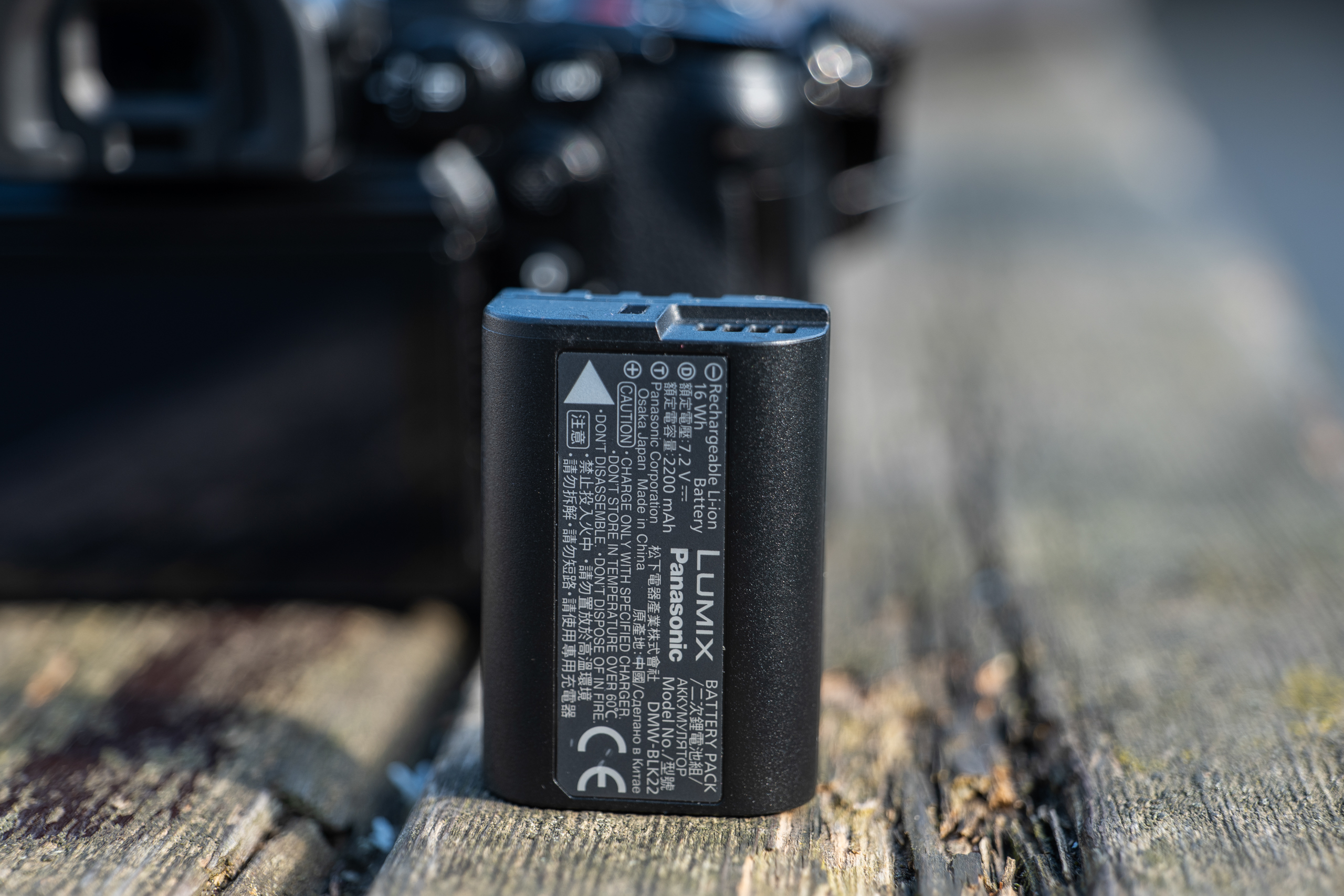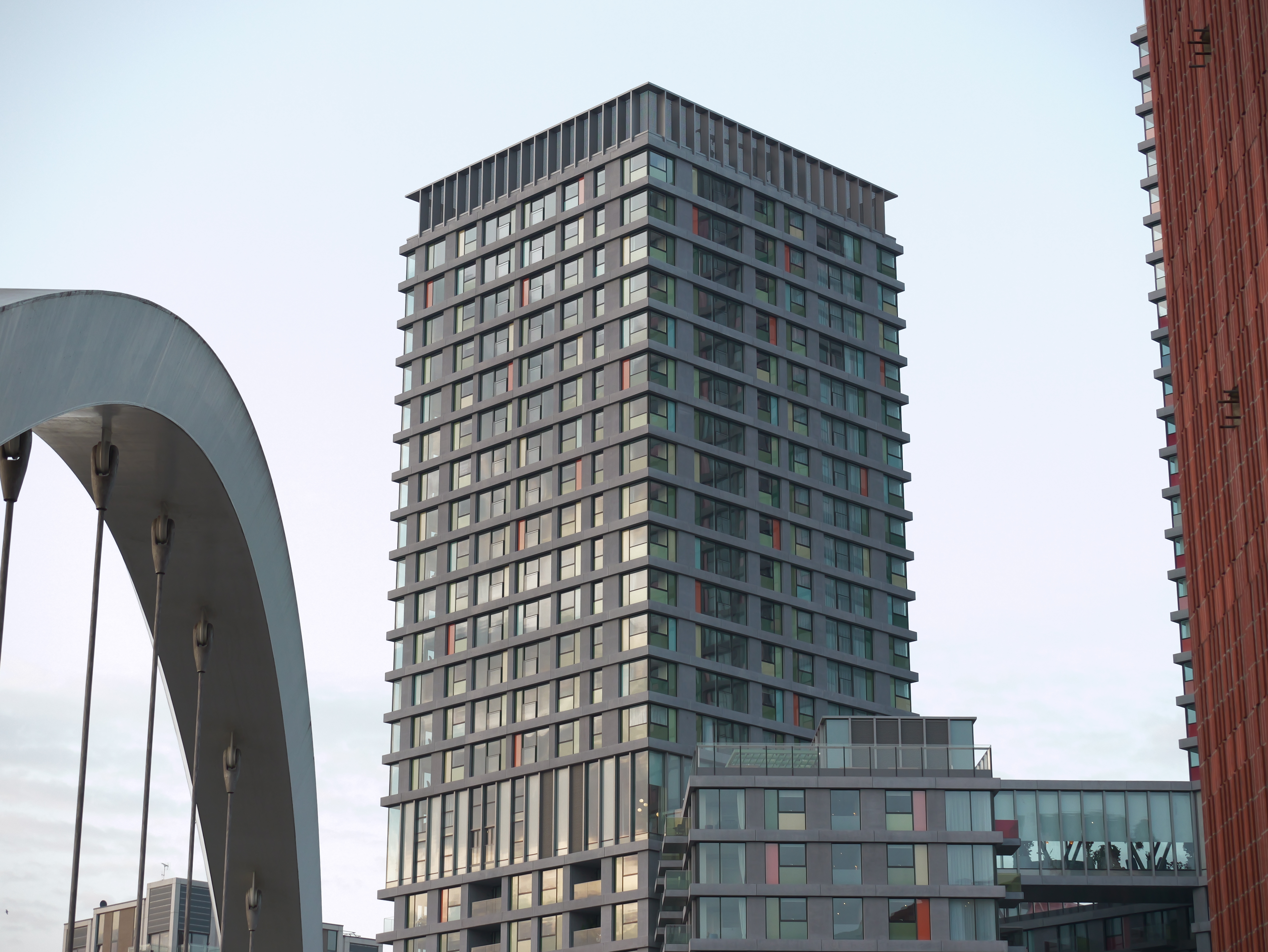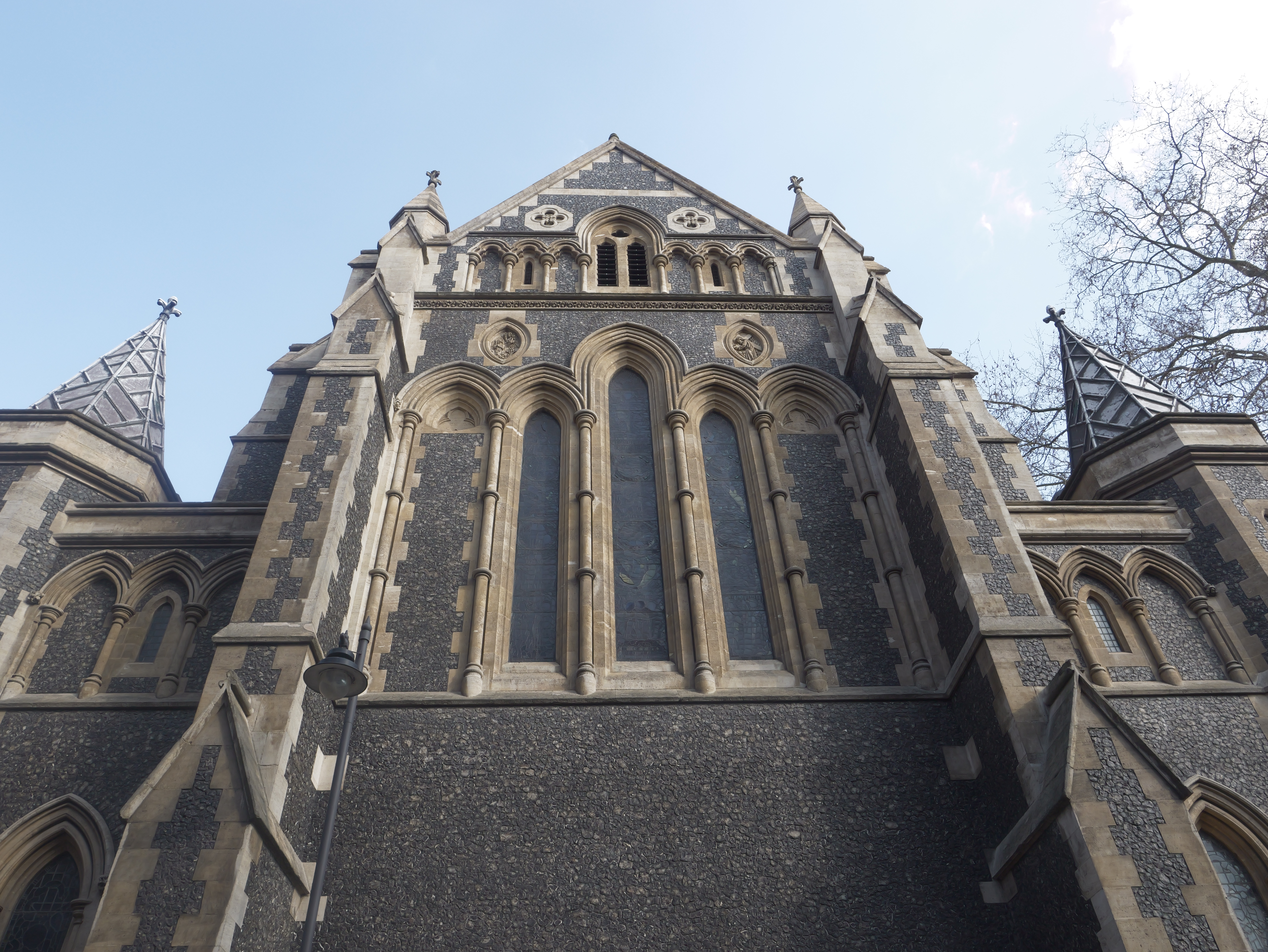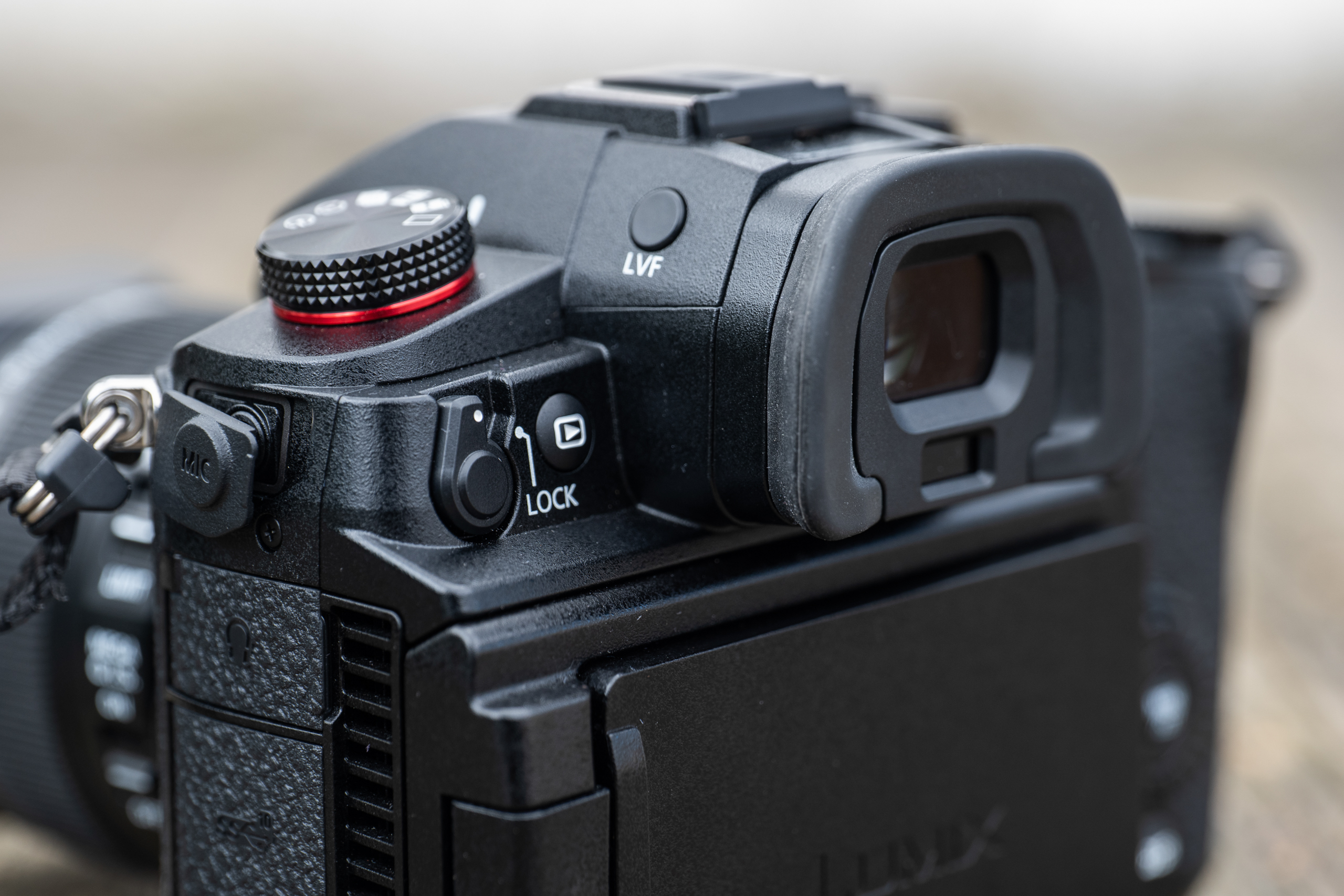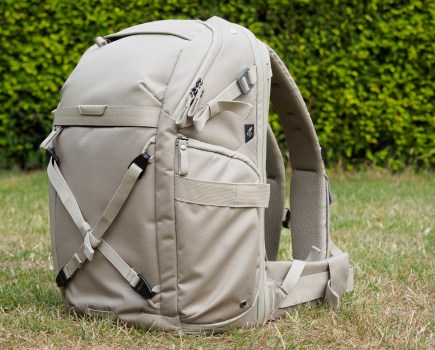After overshadowing Panasonic’s announcement of the Lumix GH5 II, the long anticipated Panasonic Lumix GH6 is finally here. There were many questions in the build up to its release; Would it shoot 8K video? Would it have phase detection autofocus? Would it ditch the Micro Four Thirds mount? And now we know the answer to those most popular ponderings, it’s a resounding “no” on all three counts.
Each iteration of GH camera has heralded a new age for Lumix and hybrid cameras as a whole. The original GH1, brought HD video to the G-series cameras. The GH2 gave creators more choice in terms of frame rate, introducing 50i and 60i Full HD recording. When the GH3 arrived in 2013, it was clear Lumix had found its niche – compact and powerful hybrid cameras that could rival DSLRs by out-innovating them in terms of video. The GH3 added 60p Full HD video, weather sealing, as well as headphone and mic sockets, making it a much more serious tool for filmmaking than any of its rivals.
With the GH4, Lumix introduced 4K video, one of the first consumer cameras to do so. Along with the GH4, Panasonic introduced the optional DMW-YAGH module that added XLR inputs, full-sized HDMI out and SDI compatibility. It was a benchmark camera and helped to solidify the GH brand as a serious option for advanced creators as well as professionals.
The GH5 swanned into the fray with gravity-defying stabilisation, proving you really could run and gun without the need for additional gear such as gimbals.
Panasonic Lumix GH6 at a glance
- New 25.2-million pixel Micro Four Thirds sensor
- ISO 50-25,600 (extended)
- 3.68m-dot electronic viewfinder
- 1.84m-dot tilt and free-angle touchscreen
- 100MP High Resolution Mode
- 5-axis in-body stabilisation
- Up to 5.7K 60fps video recording
- CF Express and SD card slots
- USB-C 3.1 Power Delivery
- Full-size HDMI
- panasonic.com/uk
So what’s the generation defining feature of the GH6? All of the codecs. The GH6 gives creators almost every conceivable codec that they may want to shoot on from 300fps Full HD to 5.7K 60fps and to top it off, you can also record 5.7K video at up to 30 fps in Apple ProRes format, in camera. The range of quality codecs and the inclusion of full fat V-Log places the GH6 firmly in the cine camera realm. But for better or worse, that raises the bar of expectation for how it performs in all areas, not just recording format.
The GH6 costs £1,999 body only, which is astonishing when you consider its extensive spec sheet. Cameras within its price bracket don’t really merit sensible comparison, rather, you’d have to look at full-frame cameras that are around twice the price to get similar features. Can the GH6 really hold its own with the best cine-focused hybrid mirrorless cameras? Let’s get into it.
Panasonic Lumix GH6 Features
To the disappointment of some, Panasonic has stuck to its guns with its Depth From Defocus autofocus system, which is contrast based. During the launch event, Autofocus was barely mentioned, only in passing to say that the GH6’s DFD system is using advanced algorithms and benefits from the improved processing power of the latest generation Venus Engine. Vague at best, but I’ve come to learn that when Panasonic claims an improvement, it’s worth giving it the benefit of the doubt.
Some others have bought into the idea that the Micro Four Thirds mount is dead and for that reason, they’ll also be sceptical about a brand new flagship camera in this mount. But they’re ignoring the benefits of sticking with a small sensor; it helps keep the size of the camera down while delivering some impressive specs. Panasonic claims that the all new 25.2-million pixel sensor at the heart of the GH6 is capable of super fast readout speeds, twice as fast as its predecessor. This is also due to the new Venus Engine, now in its 10th generation.
Panasonic Lumix GH6 – 6 things you need to know
- Codecs – The GH6 offers a broad range of codecs and formats, including Apple ProRes.
- Power – The USB-C 3.2 port supports power delivery and high speed data transfer.
- Ports – The GH6 has all of the ports; Full-sized HDMI 2.1 TypeA, USB Type-C 3.2 Gen 2, 2.5mm remote socket, dedicated headphone and microphone interfaces, and flash sync port that doubles as TC in/out.
- LCD Display – Borrowing from the Lumix S1H, the GH6’s 3in touchscreen display can tilt upwards as well as be rotated and flipped.
- Fan – Keeping the camera cool and helping it to deliver unlimited recording times, the GH6 retains dust and splash proof despite having active cooling vents.
- Cards – Card slot 1 now accepts CF Express Type-B cards for video with a data rate of 800Mbp or more, while card slot 2 accepts UHS-II SD cards.
The new sensor and processor combination enables the GH6 to record DCI 4K (4096 x 2160) video at up to 120fps and 5.7K video at 60fps. It also means the GH6 is capable of capturing full resolution stills at a blistering 75 frames per second in electronic shutter mode with single AF.
Panasonic has also improved its already best-in-class in-body image stabilisation, which steadies the camera on 5-axis. When paired with a compatible Panasonic O.I.S. lens, the GH6 is rated to deliver 7.5-stop Dual I.S. This improvement in stability also makes it possible to handhold the camera when taking pictures in its high resolution mode. The GH6 can be used to capture 50.5MP and 100MP stills by rapidly shifting the sensor and using AI to produce a clear image from the stacked exposures. We’ve seen similar modes before, but it’s impressive to be able to execute this mode handheld.
V-Log
Bolstering its video credentials the GH6 comes with V-Log, a professional video picture profile, installed and not as a paid upgrade as it was with the GH5. Shooting in V-Log raises the base ISO to 250 and flattens the look of the image, providing greater flexibility for colour grading in post. You can take this a step further by turning on Dynamic Range Boost, which increases the base ISO to 2000.
With DNR Boost on, the GH6 can capture footage with a stated dynamic range of around 13-stops in ideal conditions. In use, I found the utility of this mode, most noticeable in retrieving highlight details that would have otherwise been blown. This could be useful when shooting in high contrast daylight where you’re contending with strong shadows and trying to achieve a more attractive highlight roll-off on faces for example. To make viewing your footage easier while shooting in V-Log, you can now upload custom LUTs and select them all within camera.
Video Feature Highlights
- 5.8K 30fps 4:2:0 10bit, Anamorphic
- 5.7K 60fps 4:2:0 10bit
- 4.4K 60fps 4:2:0 10bit, Anamorphic
- C4K 120fps 4:2:0 10bit
- C4K 60fps 4:2:2 ALL-I
- FullHD 240fps 4:2:2 10bit
Panasonic Lumix GH6 Build and Handling
The look and design of the GH6 is distinctly different from the GH5. It adopts the angular aesthetic of the S-series Lumix cameras and due to the inclusion of its active cooling fan; the GH6 is noticeably larger than the GH5 II. However, it’s not a large camera by any means. Measuring 138.4 x 100.3 x 99.6mm and weighing 823g, the GH6 is almost 100g heavier than its predecessor. And for people who own cages from the GH5 II, it’s worth noting that it’s also about 2mm taller and 12mm thicker from mount to display, so you may need to factor in the cost of a new cage when considering an upgrade.
Further similarities with the S-series continue as you look more closely at the GH6. They include the logo placement, which has shifted from the inside – next to the grip – to the outside shoulder, where it is on the S-series. It even has a tally light in the same place as the one on the S1H, as well as one on the rear, to indicate when the camera is recording. The baseplate now features an anti-rotation pin hole in front of the tripod thread, to stop the camera moving while mounted. This is a common feature on the baseplates of professional cine cameras, which is why the only other Lumix cameras to feature this are the S1H and BGH1.
While looking at the controls, the rear button layout is almost identical to those on the Lumix S-series. The front and top plate of the GH6 reveals some interesting additions and omissions. There’s now a dedicated Audio button, which provides quick access to audio monitoring and settings while filming. There’s also two anodised red record buttons; one on the bottom corner below the lens mount release and another towards the rear of the top plate. I would have preferred the placement of the audio and record button on the top to have been switched as the record button feels awkwardly placed when shooting with the camera handheld.
However, all of the buttons and dials on the GH6 can be remapped to suit personal preferences, alleviating the issue. The mode dial has a pleasantly knurled texture and a push button locking mechanism to prevent accidental twists. The drive dial is slightly smaller and looks almost identical to its predecessor, giving access to its burst modes, self-timer and its simplified timelapse functionality. Except it now features High Resolution mode in place of 6K photo mode, which seems to have been inexplicably nixed from the system altogether.
The GH6 feels every bit as solid as you might expect from a tool aimed at professionals, with its die-cast magnesium alloy frame and solid grip. Despite the fact that it has active cool fan vents, it retains its dust and splash resistance rating, which is impressive.
The fan is barely audible when in “Normal” mode, which is turned on automatically when recording in ProRes or at the highest frame rate and resolution settings. It also has automatic settings, one which turns the fan on according to the recording mode and one that only activates the fan in relation to the camera’s internal temperature.
When the fan is in “Fast” mode its hum will likely be picked up on microphones in small or quiet indoor environments. However, I can’t imagine many scenarios where the camera would require that level of cooling while inside. The GH6 is rated to operate between -10°C to 40°C (14°F to 104°F), so unfortunately that does rule out sauna shoots.
To accommodate its impressive peak video modes, the GH6 now takes CF Express Type B cards in slot 1, as well as UHS-II SD cards in its second slot. On the left side of the camera, snug-fitting rubber covers reveal a full-sized HDMI TypeA input, a USB Type-C 3.2 Gen 2 with power delivery, as well as 3.5mm headphone and mic interfaces. Rounding off the inputs, the GH6’s flash sync output cleverly doubles as a TC in/out. To take advantage of this, Panasonic has also included a BNC converter cable in the box to allow you to sync the GH6 with other devices and cameras using timecode.
Aside from the awkward top recording button, navigating the GH6’s controls is a fluid affair, with very little reason to deep dive into the settings once you’ve assigned your buttons and customised the Quick Menu. Panasonic has pretty much nailed it when it comes to the user interface in general. Its menus are simple and intuitive. Even the extensive list of video encoding options are simplified with a filtering function that lets you display options by frame rate, resolution, codec and variable frame rate.
Consolidating the look and feel of the GH6 to sit more at home alongside the S-series cameras was a good call, it handles like a professional tool. Aside from the ease of its controls, I particularly like the camera’s substantial grip and its tilting free-angle monitor, which we’ll focus on next.
Viewfinder and Screen
There are no new exciting numbers to contemplate when looking at the GH6’s OLED viewfinder and 3in touchscreen display, they’re solid, but they’re the same as those featured in the GH5 II. The EVF has a resolution of 3.68-million dots and 0.76x magnification, offering a bright, crisp view of the scene ahead as well as displaying overlaid settings clearly. Monitoring is set to a native 4:3 aspect ratio, however it’s possible to set frame markers to help when shooting your content for multiple outputs. For example, I had the GH6 setup to display a 9:16 window with 25% opacity so that I could ensure key elements of content would also be visible when editing for social media.
Additional viewing aids include the ability to add an adjustable luminance spot meter, histogram and WFM/vectorscope, as well as Live View Boost, Night Mode and a whole raft of other options that can be brought up to assist in achieving desirable exposures in all conditions.
Sitting on top of the active cooling fan, just as it does on the Lumix S1H, the LCD monitor of the GH6 is clearly visible in direct sunlight. With a decent 1.84 million dot resolution, I found it easy to see on bright days without having to adjust its backlight brightness to the maximum +3 setting. Monitoring can be done at either 30fps or 60fps and I noticed little lag while using the EVF or the rear display.
The best part isn’t the monitor itself, it’s the fact that Panasonic has deployed an improved version of the tilt and free-angle mechanism featured in the S1H. This allows the display to be tilted upwards, as well as being flipped out and rotated. The main benefit for this design is, it creates space between the interfaces allowing the screen to be fully manipulated without being caught on cable inputs. And it’s improved on the S1H as they’ve removed the annoying locking mechanism that prevented the screen from being flipped out while the base was covered by a tripod plate.
Autofocus
Lumix’s proprietary contrast-based Depth from Defocus AF is deployed in the GH6 and it’s better than ever. The camera can detect between people, faces and animals, and it seems to do a great job of seeing and placing the correct green boxes around subjects, even when pointing the camera at ones that are fast moving.

Panasonic Lumix GH6 – beach scene, 1/400s, f/4, ISO100, 35mm, 70mm equivalent – click image to view 25MP and click here to view 100MP
I used the Lumix GH6 in a range of different lighting and shooting scenarios and can confidently say this is the best DFD-based AF system from Panasonic yet. I found focus-acquisition fast and relatively consistent when shooting stills in most cases. But unpredictable movements during long bursts will trip this system up occasionally. Thanks to its fast sensor readout and improved processing, the GH6’s AF is more capable than ever of making quick distance calculations and driving its lens motors to keep track of subjects. But the fact that it’s still contrast-based means it’s still held back somewhat when going toe-to-toe with rivals using phase-detection autofocusing. This is most evident when recording video.
Contrast-based systems tend to flutter ever so slightly while they are checking focus, this is most visible in highlights. While the effect was far less noticeable in footage captured using the GH6, compared to the GH5, it’s still there if you look carefully for it. That said, I was pleasantly surprised by the GH6’s ability to spot subjects and stick with them in real-world shooting scenarios. There are a number of settings within the menu to help it further, such as adjusting AF speed and sensitivity. You can also set two focusing distance limits; near and far. This prevents the camera from looking for focus outside of that specified range.

Insect on leaf, 1/400s, f/4, ISO100, 60mm, 120mm equivalent, 25MP image, and click here for 100MP handheld image
The GH6 does not have the best focusing system that money can buy right now. But it can hold its own with its rivals while shooting realistic scenarios. Contrast AF systems are generally easier to trip up if you’re trying, but if you’re making genuine content and not just carrying out unrealistic AF tests for YouTube, the GH6 is perfectly equipped to keep up the majority of the time.
Panasonic Lumix GH6 Performance
Powering up the GH6 from a cold start takes a little under two seconds, this is halved when powering up from a recent power down. I didn’t find a notable improvement in startup speed comparing it to the GH5 II. The GH6 uses the same DMW-BLK22 2,200mAh battery as the Lumix S5 and GH5 II, it’s rated to last around 330-750 images depending on your power saving settings. In a typical mixed use scenario, the battery of the GH6 held up for around 500 RAW+JPEG photos and around 150GB of 4K/120p video, with Power Save Mode set to Sleep every 2 min. I had five batteries, but only had to go through two during the whole occasion, which lasted roughly four hours.
Like many people anticipating this camera, I was hoping for a complete overhaul of the camera’s focusing system as it’s the one area of criticism that’s persistently levelled at this system. However, as mentioned in the focusing section, I was surprised by how quickly and well it performed. I tried out the camera’s continuous focusing capabilities in a number of different real world scenarios, including a live performance involving two dancers on a small stage in relatively low light. The subject detection box stayed with the performers the whole time, however occasionally the focusing would struggle to keep up with the unpredictable and spontaneous movement. On average it seemed that out of 12 shots in a sequence, 2-3 might drift out of focus, whenever the camera lost track and had to re-engage.
Panasonic Lumix GH6 Image quality
Lumix colour science is one of the main reasons I enjoy using its cameras. The GH6 upholds the brand’s reputation for reproducing faithful colours that are rich in tone with no noticeable colour bias. Having a consistently accurate auto white balance and metering system gives me greater confidence to shoot in JPEG when I don’t need the security and freedom of shooting RAW images. With its new higher resolution 25.2MP sensor, it’s a welcome bonus to have the option of relying on superb JPEGs and save storage space for video and more stills. Switching between stills and video is made easier by the fact that shutter speed settings are retained between Creative Video mode and Manual Exposure. You can also choose to have Shutter represented as Shutter Angle and ISO displayed in terms of Gain, keeping things in line with typical cine camera operation when you’re shooting videos.
The new Venus Engine promises improvements in low light performance and noise handling due its New Intelligent Detail Processing and noise reduction. In use, the Lumix GH6 is surprisingly clean in both stills and video at extreme ISOs, all the way up to around ISO 12,800 where details will become a little soft. But the noise floor is still clearly organic in look and feel, which is impressive for a Micro Four Thirds camera.
Another area where this camera excels is stabilisation. Using the kit 12-60mm f2.8-4 kit lens with Power O.I.S, I was able to achieve handheld shutter speeds of around 2sec at the extremes, but comfortably and consistently at 1/5 sec. Panasonic states that the GH6’s Dual I.S 2 can combine the lens and camera IBIS to offer up to 7.5 stops of correction. The GH6 is a camera that may allow you to leave your gimbal at home unless you need smooth footage with a lot of camera movement. With this latest offering Panasonic has made some significant improvements to an already best-in category stabilisation system, making Dual I.S 2 the system to beat for accessory-free solo shooting.
The new 25.2MP sensor inside the GH6 is the highest resolution Micro Four Thirds system to date and it delivers beautifully detailed images with a decent amount of latitude for adjustment in post, even when shooting JPEGs. I found this sensor more forgiving of over- and under- exposure compared to any other camera I’ve used in this class. It’s worth noting that the camera seems to have an under-exposure bias. When faced with a high contrast scene and left to its own devices, I noticed a tendency for the camera to prioritise highlight details, crushing the shadows instead.
Video out of the GH6 looks filmic in quality and its quality holds up on large screens. The ability to shoot 5.7K/30p Apple ProRes 4:2:2 HQ and Cinema 4K (4096 x 2160) in 4:2:2 10bit in V-Log, with an All-I codec truly puts high quality cinematic video within grasp for owners of this camera.
Panasonic Lumix GH6 Verdict
This camera was clearly designed with video-centric creators in mind, but it holds its own when capturing stills as well. Perhaps the most surprising thing about the GH6 is the fact that it costs £2000. There’s no camera within its price bracket that comes close to offering a similar set of specifications and options for video recording. Even its full-frame siblings, the Lumix S1 and the Lumix S5 cannot match it for frame rates and recording formats.
The GH6 was the camera many hoped the GH5 II would have been and given the price point it begs the question; why would anybody buy a GH5 II when £200 more would get them all the benefits of the GH5 II, plus an all new 25.2MP sensor, improve audio functionality, handheld 100MP high resolution stills, 5.7K/60p, C4K/120p, Apple ProRes, V-Log, up to 4-Channel 96kHz/24-bit audio and more.
By no means is the GH6 perfect. It’s still using a contrast based AF system, it lacks internal RAW recording and has left behind 6K/4K photo mode. However, it is set to gain the ability to output C4K/120p to an external recorder via HDMI, as well as support for recording to an external SSD via USB-C through a firmware update; two things that will further boost its functionality as a professional video tool.

Panasonic Lumix GH6 25mp, 1/400s, f/4, ISO100, 48mm, 96mm equivalent – click image for 25MP image and here for the 100mp version
If you want a hybrid camera with genuine cine camera capabilities and functionality, this camera is tough to beat within its price bracket. With the GH6, Panasonic has created another category-redefining camera that proves, at least for now, Micro Four Thirds is most definitely not dead.

Have a look at more options in our guide to the best Panasonic cameras.

